
Sitemaps is the structure of your WordPress website. Sitemaps should be done by every WordPress website owner. In this article, you’ll learn what a sitemap is and why it’s important to submit a URL sitemap to Google Search Console. In this tutorial, you’ll also learn how to submit one in the easiest way possible.
A WordPress website with a good URL sitemap is essential to submit your sitemap URL or sitemap file to search engines. There are plenty of ways to help you through this process.
Sitemaps help search engines crawl and index your website. A sitemap can result in way more pages getting indexed and ranked. Having a sitemap is a crucial part of search engine optimization (SEO).
Sitemaps link to each page on your site. With each page having a link, it helps your visitors find what they are looking for easier.
Let’s get started with the basics.
This may sound a little remedial but to someone new to online marketing defining marketing terms is important. Search engines are programs that allow a user to search for information in the world wide web. They are like machines that provide answers to queries entered by a user. Google, Bing and Yahoo are the most well known.
A user types a keyword or a phrase into the search. They will receive a list of results that are related from the typed keyword or phrase.
Search engines go through billions of pieces of content and they evaluate different factors to determine which content is more likely to answer the queries of a user.
How do search engines do this?
The first process is through crawling. With crawling, the search engine goes through all the content in the internet, looking over the content and code that are in each URL that they find. Once the search crawlers (aka spiders) have crawled through the URLs, the next process is indexing.
Indexing is the storing and organizing of content that was found during the crawl process. Once a page is indexed, it will show up in the search results or search index that is relevant to the user’s query.
After indexing is ranking. This is when the search engine provides pieces of content that will best answer the search query of a user. This is when the search engine ranks results based on relevancy, ranking from most relevant to the least relevant page.
A sitemap is a file that includes information about your site such as the pages on your site, the videos, and the images, and the relationship between all of them. This is used for better navigation and it can help both the user and the search engines.
Search engines such as Google, Bing, Yahoo, among others, use sitemaps in order to better crawl your website. It tells search engines which pages and files are valuable in your website and it also provides valuable information such as when the page was last updated, how often the page is changed, and also if other versions of a page exist, such as webpages in different language versions.
Once you have decided to build a website and before you submit it to Google Search Console, you need to first map out your page structure by creating a sitemap.
Here are some of the things you will need to identify before creating one:
We touched on the benefits earlier on this article but let us get more into detail as to why you need to have a sitemap for your site. Think of these as a menu of blog posts or files on your site. Google is like your customer. It looks at your file “menu” and knows what you site is serving. If your visitor lands on this “menu”, your visitor can easily find the blog posts or services they are most interested in.
Some people add this “menu” to their 404 page in case someone lands on a page not found. Their customer can still browse their “menu”.

There are two types of sitemaps – HTML sitemaps and XML sitemaps.
XML sitemaps have two types:
Aside from these two main types, your sitemap URL can also be divided into categories:
Since the sitemap index is most popular in Google, this means that we will be setting up a sitemap file in google first. A lot of people think that setting up a sitemap is complicated. The truth is, setting up a sitemap index file for Google only requires a few minutes and is as easy as just clicking. It is easy, free, and simple and can help in your SEO. Here are some tools, services, and plugin that you can use to create a sitemap for your blog:
Screaming Frog is a downloadable crawler tool that you can use to create your XML sitemap. It is free to use for up to 500 pages.
One of the features of Screaming Frog is the SEO Spider. This crawls images, videos, head tags, meta tag, links, and CSS, just as a search spider would. This is also helpful to crawl and analyze your website from an SEO perspective. It will also give you the index status of your web pages.

There is an option when configuring speed when using the SEO Spider. Set your crawl rate and time then monitor response time. Adjust the default speed from there if needed. You don’t want to overwhelm your server’s bandwidth and cause your website to crash.

Xml-sitemaps.com is an online sitemap generator that you can use for free to set up a sitemap for your site. Same as with Screaming Frog, it is free to use for the first 500 url of your site. Some members of our team use this tool and the feedback they give is 5 stars.
The XLM-sitemaps.com script accepts cookies.
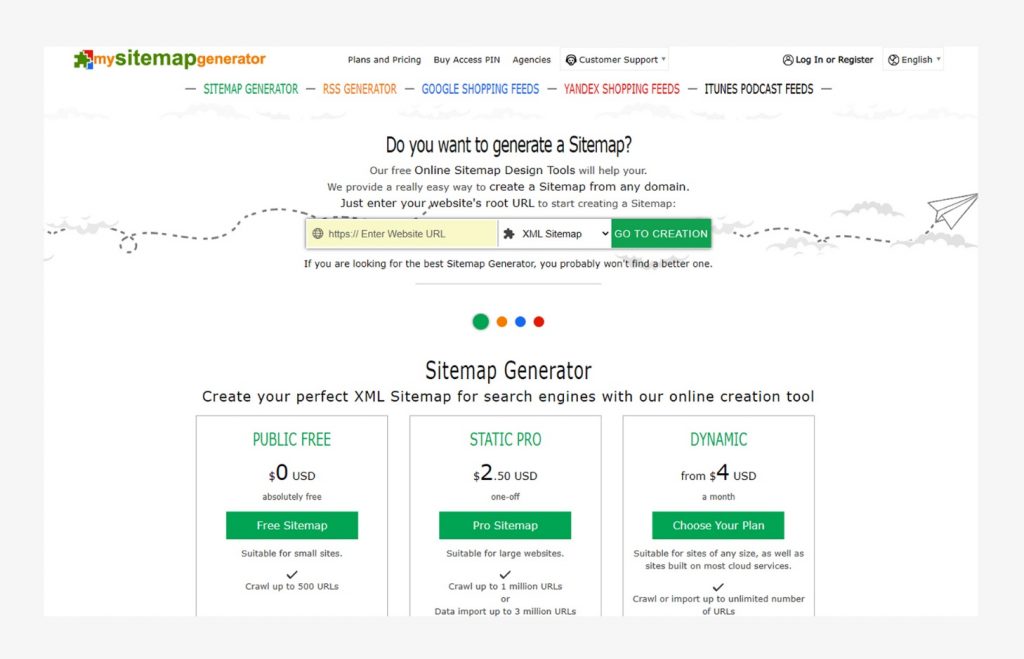
mysitemapgenerator.com is another online tool that you could use for free for small sites of up to 500 URL. Aside from that, it also allows you to set up a dynamic XML sitemap for a minimal charge.
If you’re looking for a plugin to do your sitemap, look no further. If your site is in WordPress, you can use Yoast SEO to create a basic XML sitemap and also submit your sitemap to Google. We have another article on sitemap submissions through Yoast SEO that discusses further on how to do this and you can read about it in this blog post.
A plugin is known to be susceptible to security issues and this plugin is no different. Back in 2015, Yoast was hit hard by hackers. It’s important if you are using a plugin to create a sitemap of your URLs, that you keep these up to date.
User feedback says Yoast SEO is one of the most popular and trusted plugins for sitemap submissions.
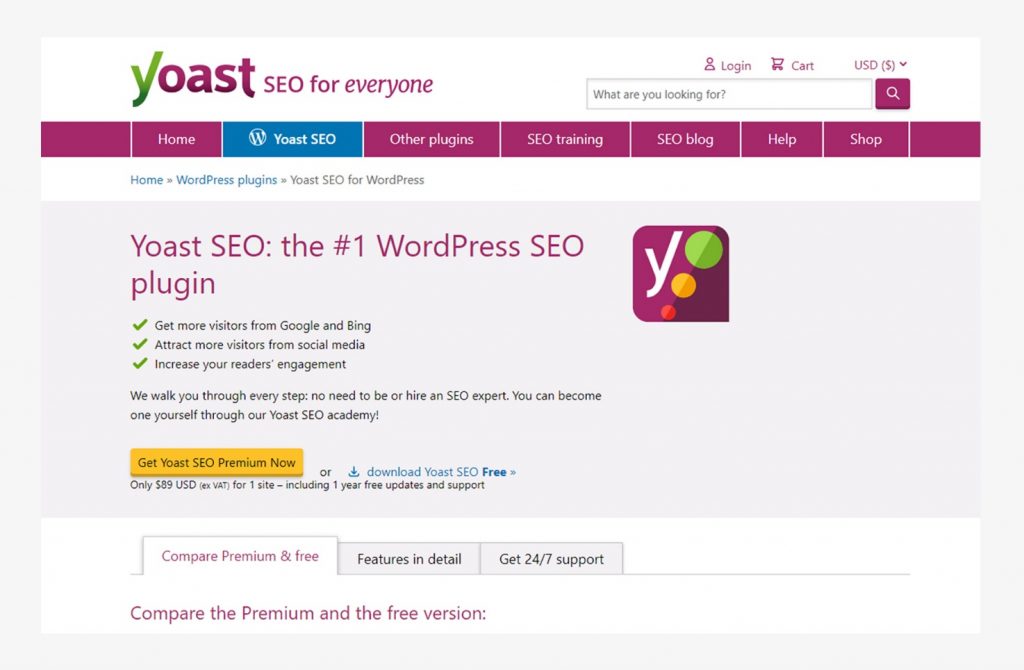
There are also other various SEO Plugins that can generate a sitemap for your site, but one stands out as the easiest way to submit a web page sitemap to Google. You can use this plugin to help you set up your sitemap and also submit it to search engines.
Now that you have your sitemap file or sitemap URL, let us go ahead with adding your sitemap to Google Search Console.
Google Search Console is a service that is offered by Google for free that helps with monitoring, maintaining, and troubleshooting your site specifically in Google’s Search. Aside from that, the Google Search Console is also the tool where you can submit your sitemap for Google.
To get started with an account, all your need is a gmail email address.
Before submitting your sitemap, you would have to verify and add your site to Google Search Console. These is the method of how to add your site:
Step 1. Go to Google Search Console and click log in or start now.
Step 2. Select the property type – either add a domain or URL.
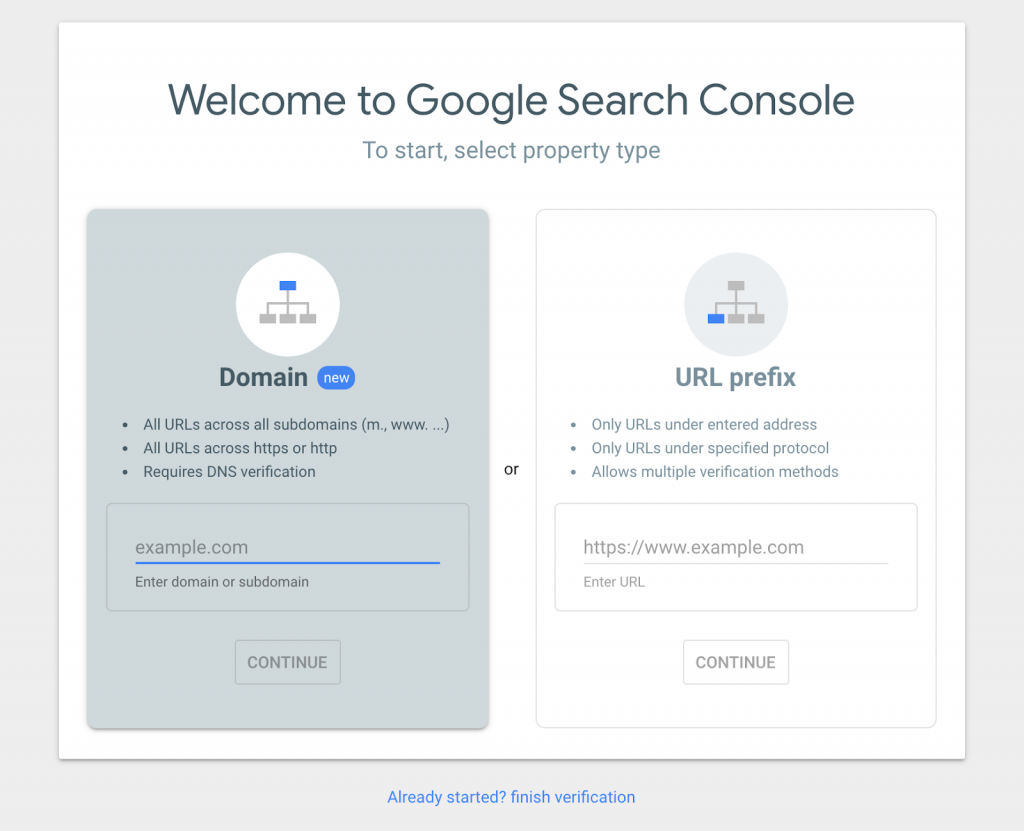
Step 3. Put your complete website URL in the box and click continue. You will be given a selection of verification methods to choose from. You could either verify later or verify it immediately
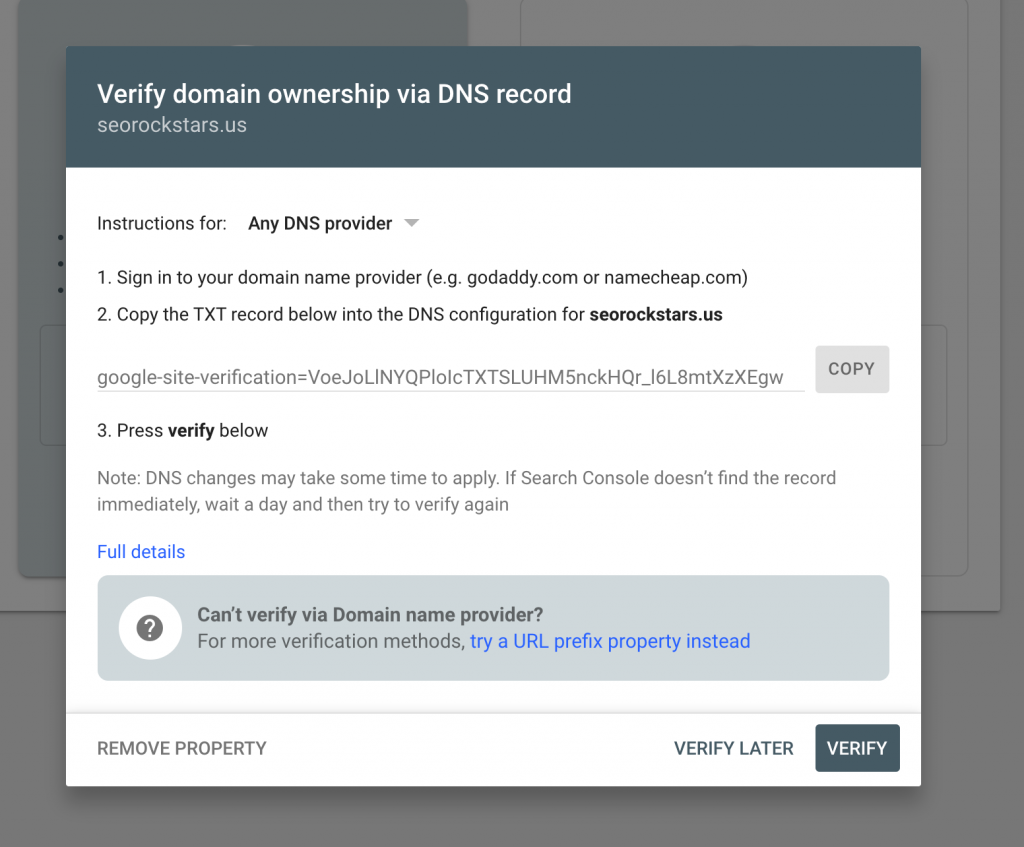
Step 4. You would be given instructions on how to verify the ownership of the domain.

Step 5. Once the site has been verified, you can now use Google Search Console and add your sitemap url, in order to help your site rank in Google. Verifying your site in Search Console also allows you to use Google Analytics.

Now, it is time to submit your sitemap to Google. There are different steps to follow depending on where you want to submit your sitemap. It can be submitted in Google Search Console, Bing Webmaster tools, and more.
Before you can submit your sitemap to Google Search Console, you would need to generate your sitemap and upload it to the root of your site. Google accepts the following formats for sitemaps:
1. Log in to Google Search Console
2. Click on “Sitemaps” menu on the left side panel.
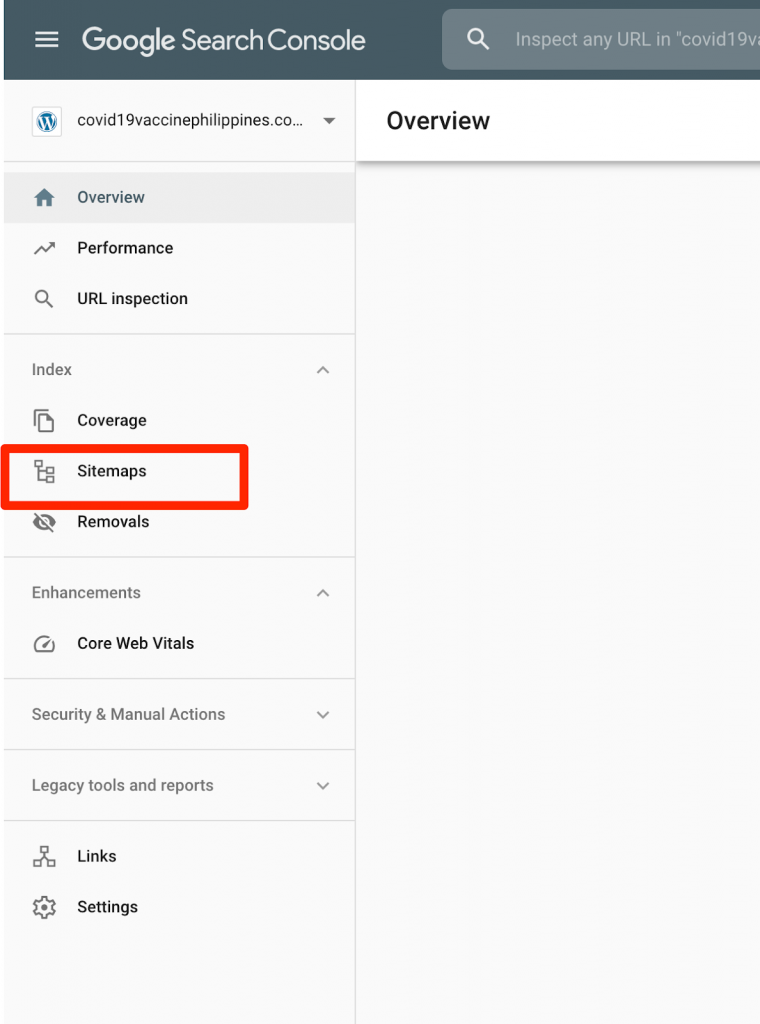
3. Enter the URL of your sitemap and click on submit.
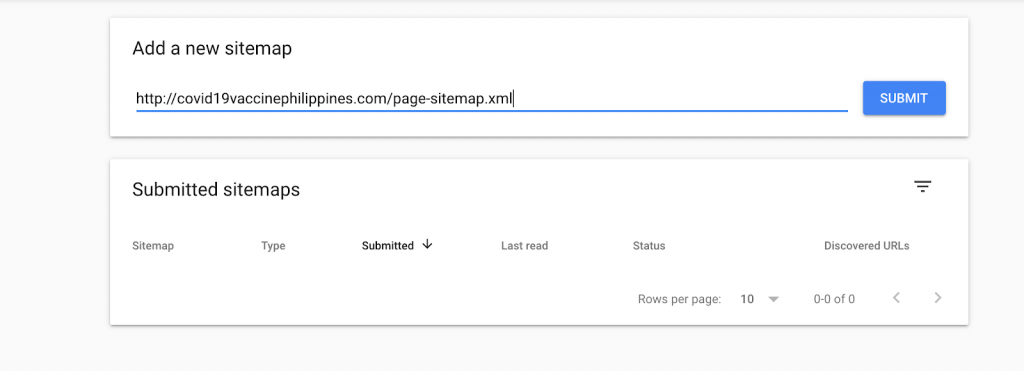
That was easy, huh? Now you have your sitemap submitted in Google Search Console. You can also submit multiple sitemap index files in the search console. Aside from that, you can also request indexing, check index status, add more site map submission in Search Console.
Now that you’ve learned to submit your sitemap to Google, let’s move on to Bing.
Bing is also one of the top search engines and you should also add your sitemap to Bing Webmaster Tools, in order to capture users who use Bing for their searches. Bing Webmaster Tools is pretty much similar to Google Webmaster Tools and adding your sitemap to it is just as easy. You’ll need to submit website to Bing for the same reasons you submit your sitemap to Google search.
1. Go to Webmaster Tools and sign in to submit website to Bing.

2. If you already have your site on Google Search Console also, you could import the details of the site. If not, manually add your site URL and click on add.
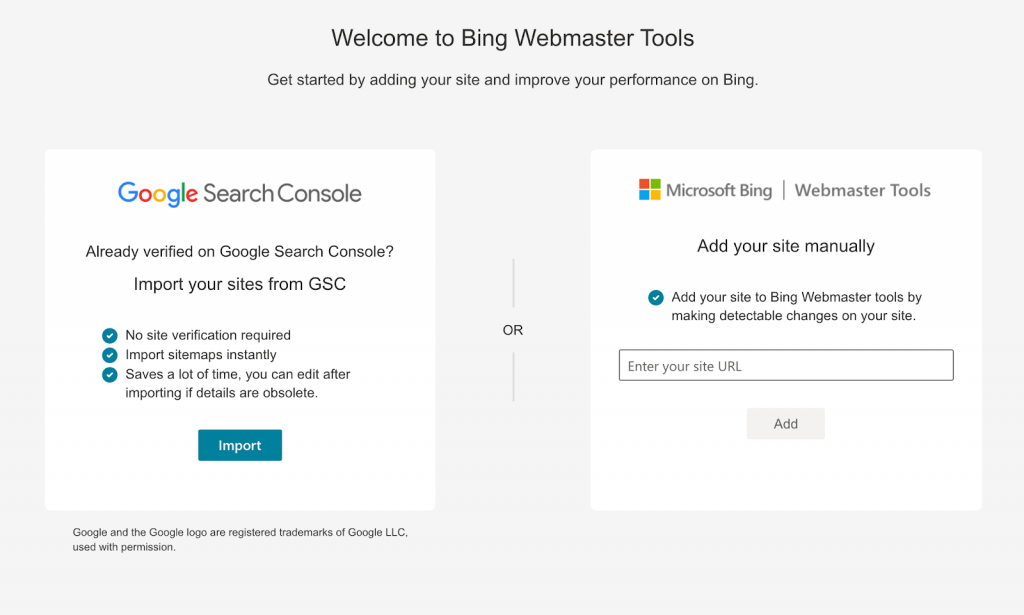
3. Verify ownership for the site. You would also be given instructions on verification, same as with Google Search Console. Once verified, you can proceed with adding your sitemap URL.
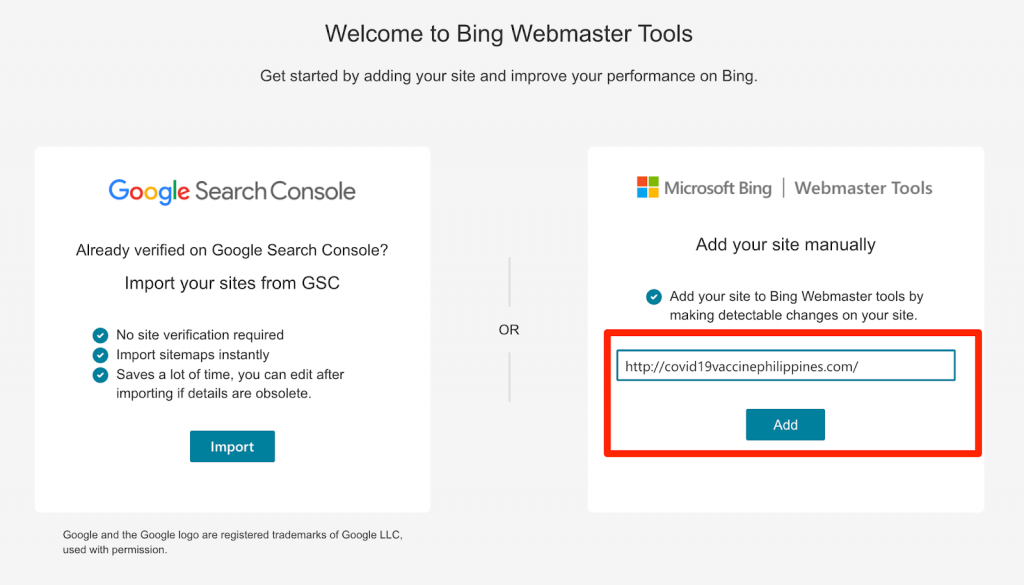
4. Go to the “Sitemaps” menu on the left side panel.
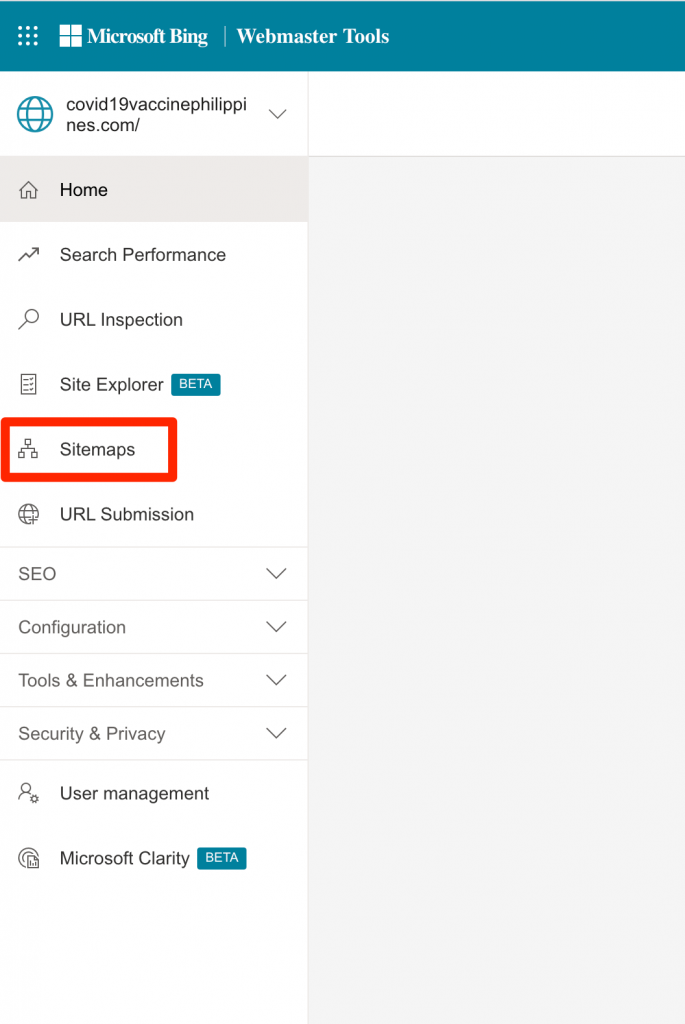
5. Click on “Submit sitemap”.
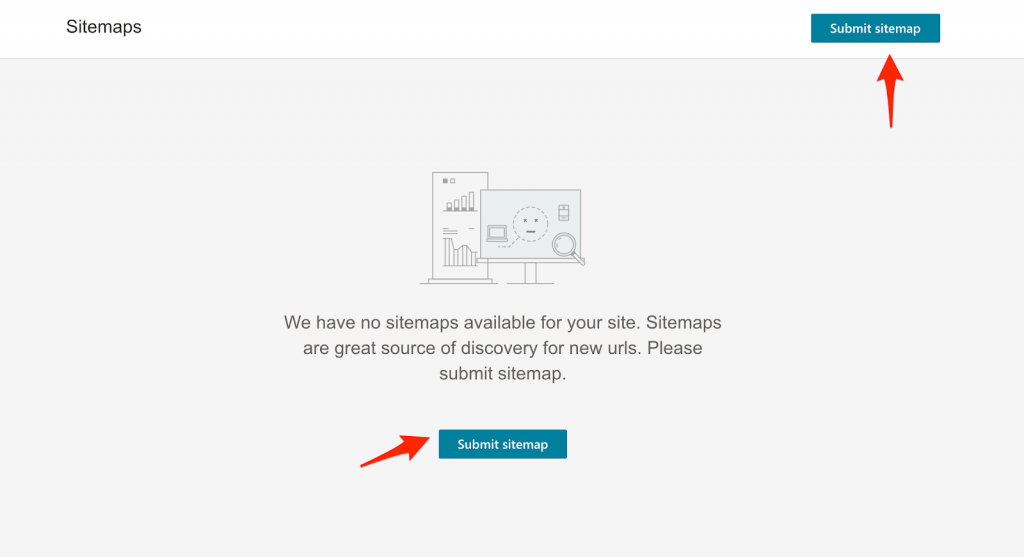
6. Enter your sitemap and click on submit.
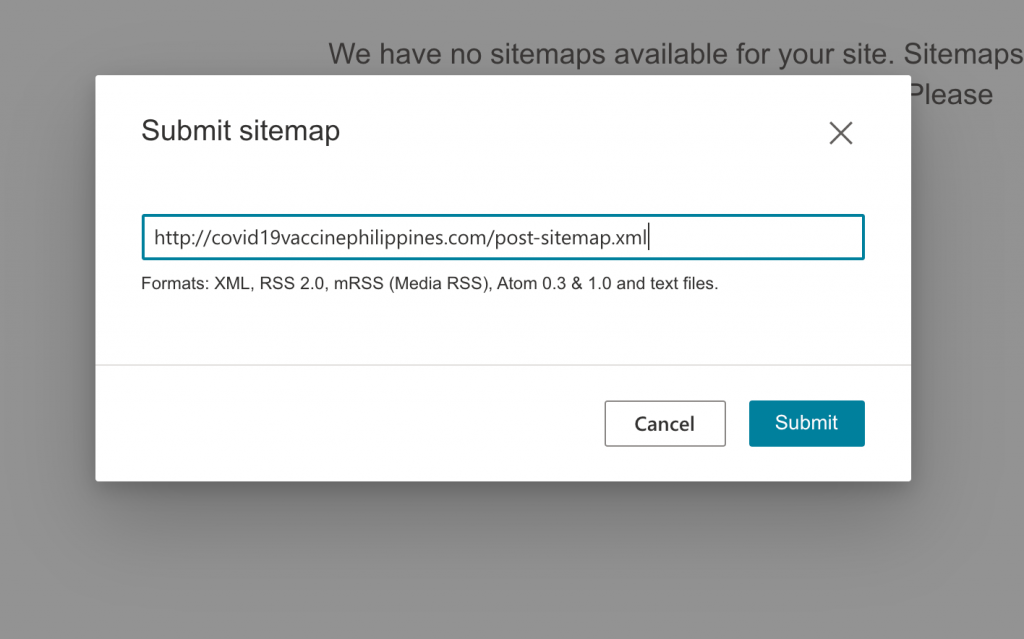
If you have a WordPress website that’s in English, the sitemap is pretty straight forward. However, if your site is multi language, you can use a different sitemap for each language. Make sure you have a sitemap listing for each of yours.
When you have already created your blog or have recently updated it, you need to let Google and the other engines know. You can ping Google with your sitemap.
Example:

<?xml version=”1.0″ encoding=”UTF-8″?>
<sitemapindex xmlns=”https://www.sitemaps.org/schemas/sitemap/0.9″>
<sitemap>
<loc>https://site.com/sitemap_en.xml</loc>
<lastmod>2021-02-11</lastmod>
</sitemap>
<sitemap>
<loc>https://site.com/sitemap_fr.xml</loc>
<lastmod>2021-02-11</lastmod>
</sitemap>
<sitemap>
<loc>https://site.com/sitemap_es.xml</loc>
<lastmod>2021-02-11</lastmod>
</sitemap>
</sitemapindex>
You additionally want to link the index in the robots.txt

Sitemap: https://site.com/sitemap_en.xml
Sitemap: https://site.com/sitemap_fr.xml
Sitemap: https://site.com/sitemap_es.xml
Sitemaps are essential to the success of your website since it shows the site’s structure. When you submit your sitemap to Google, it will notify that engine to start the crawl process. The crawler will then spider your content, index it and rank it. Ranking in Google is the best way to get more organic search traffic and clicks to your website.